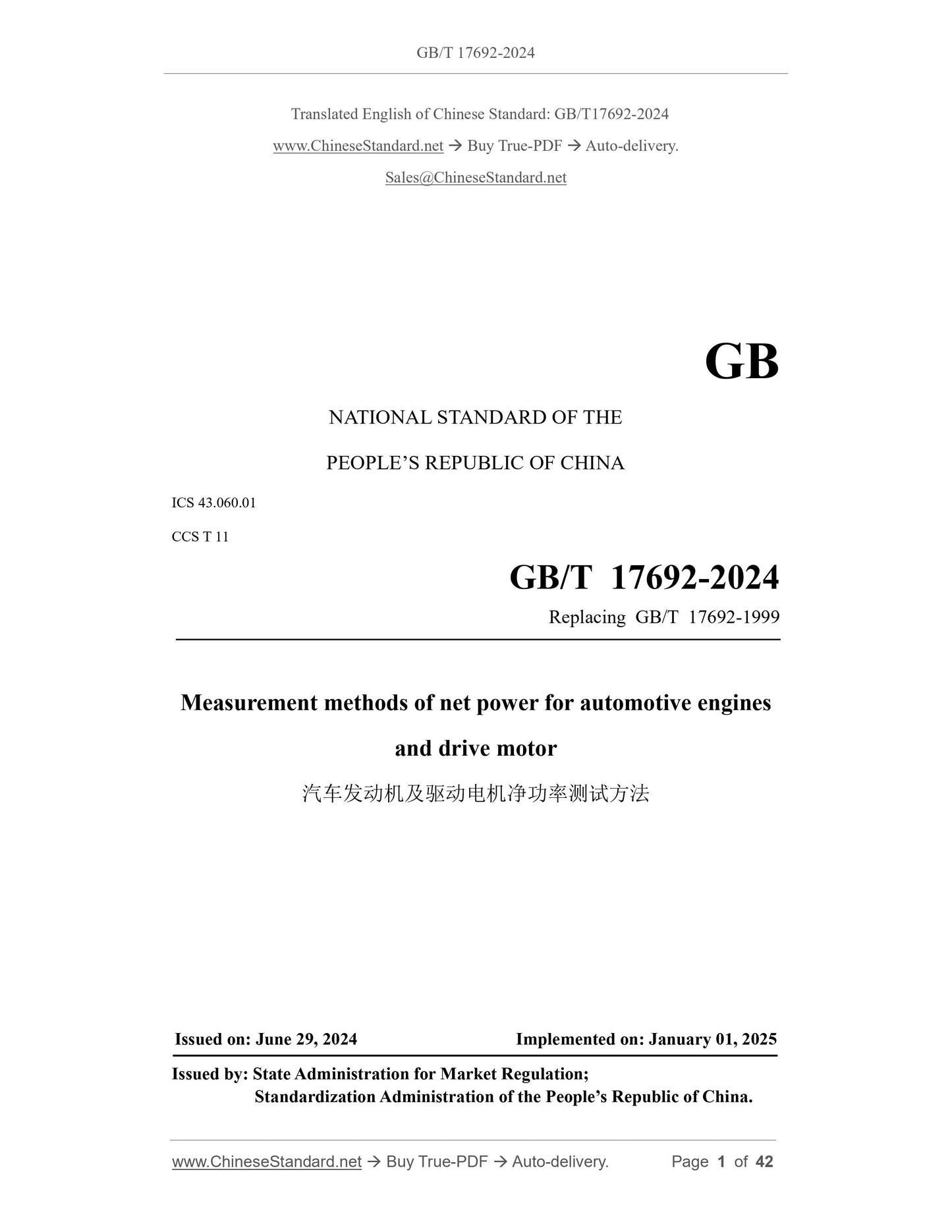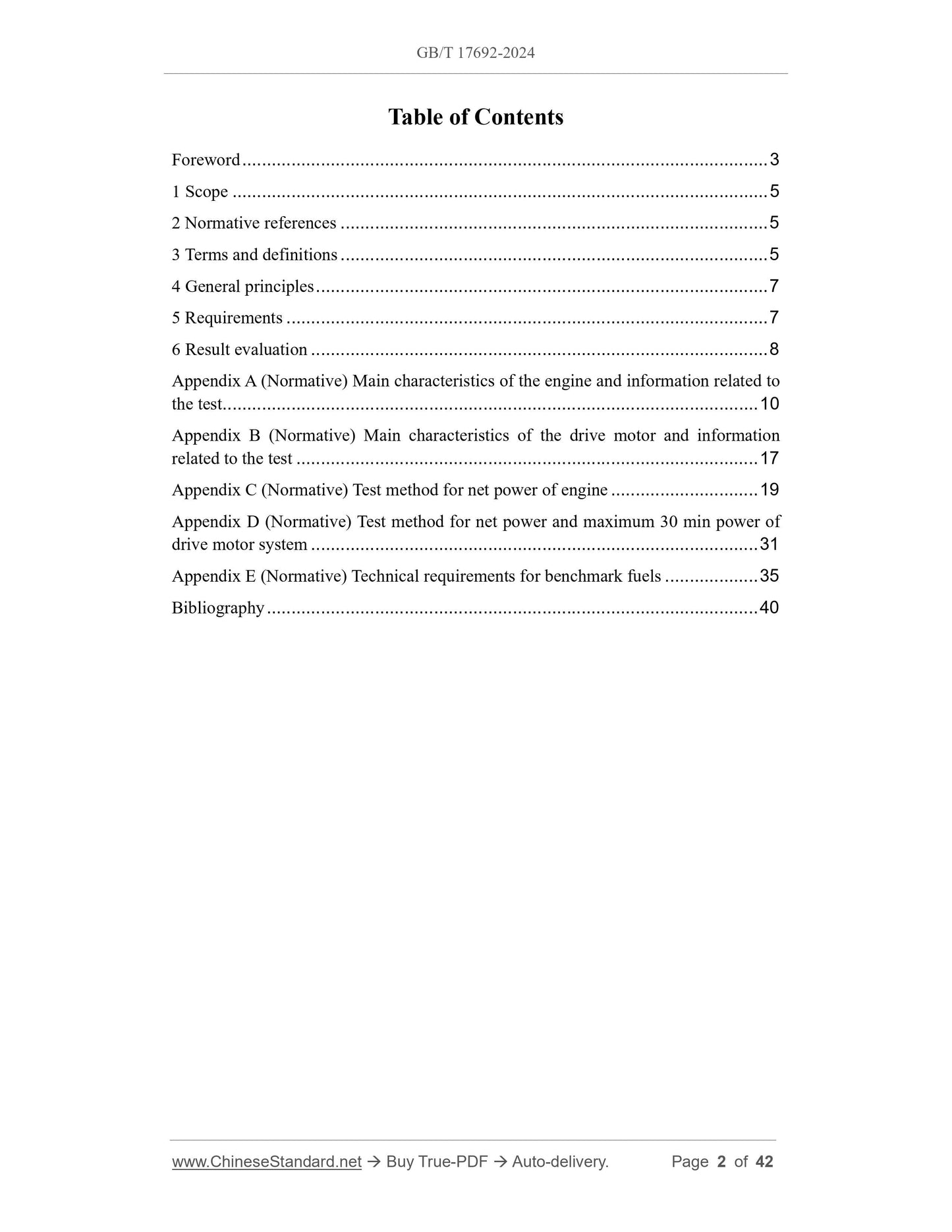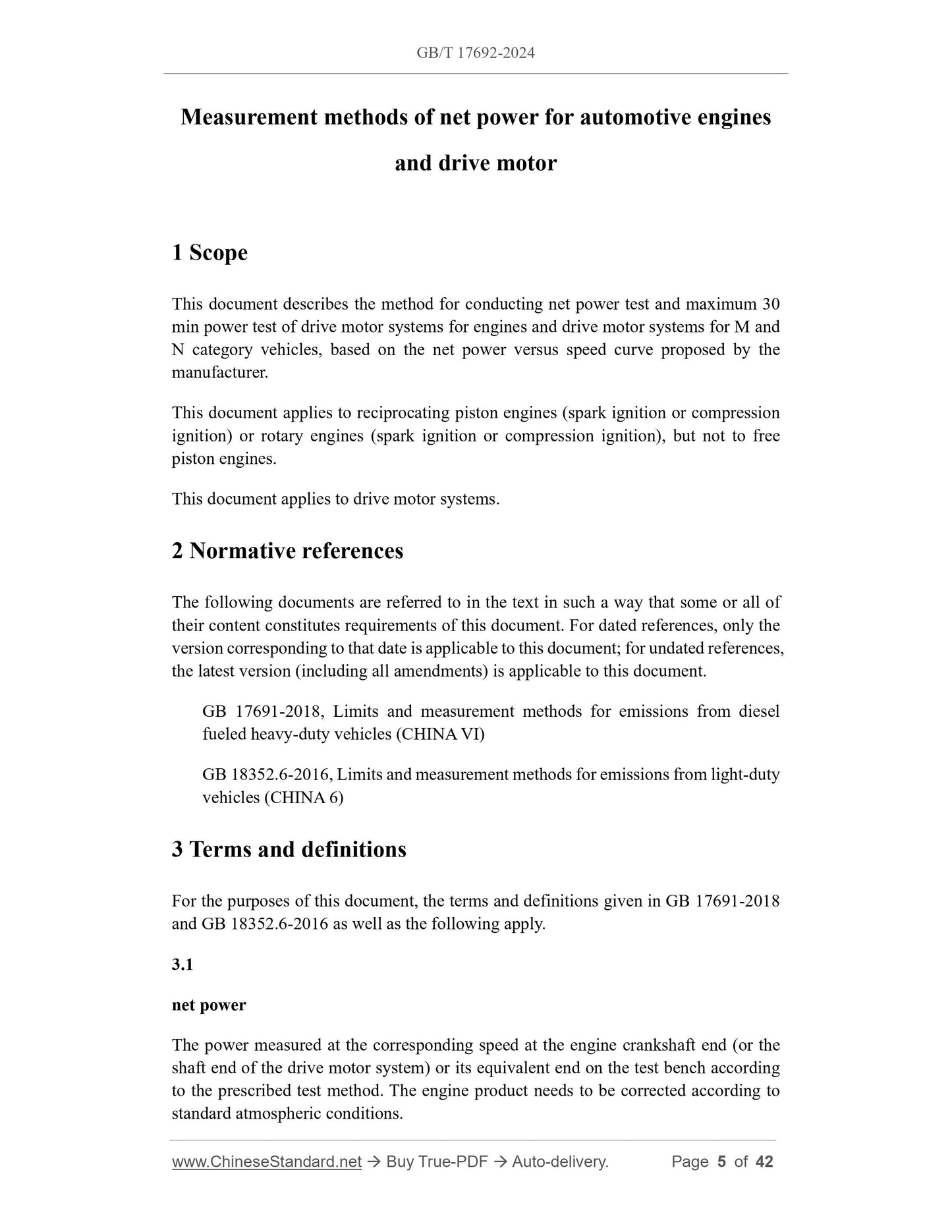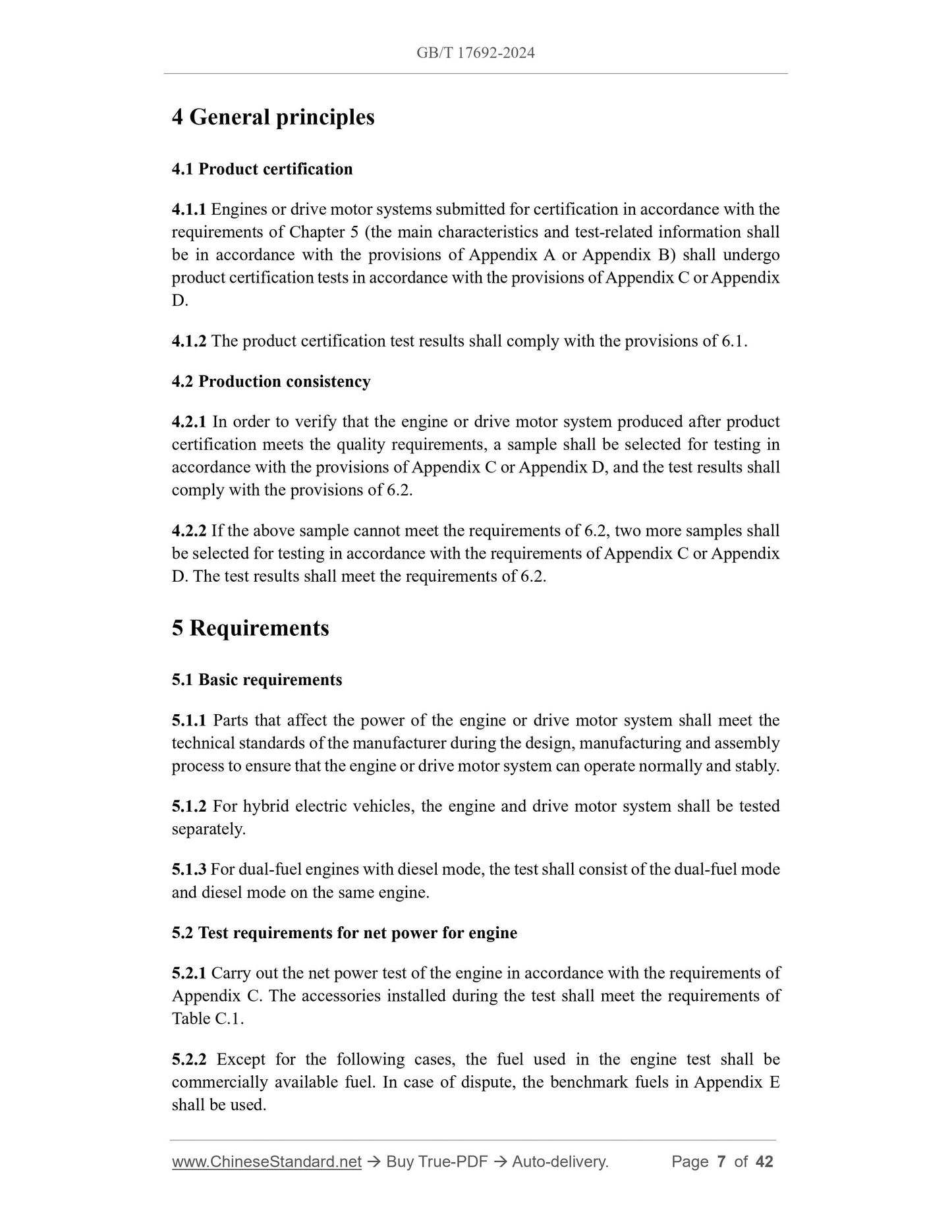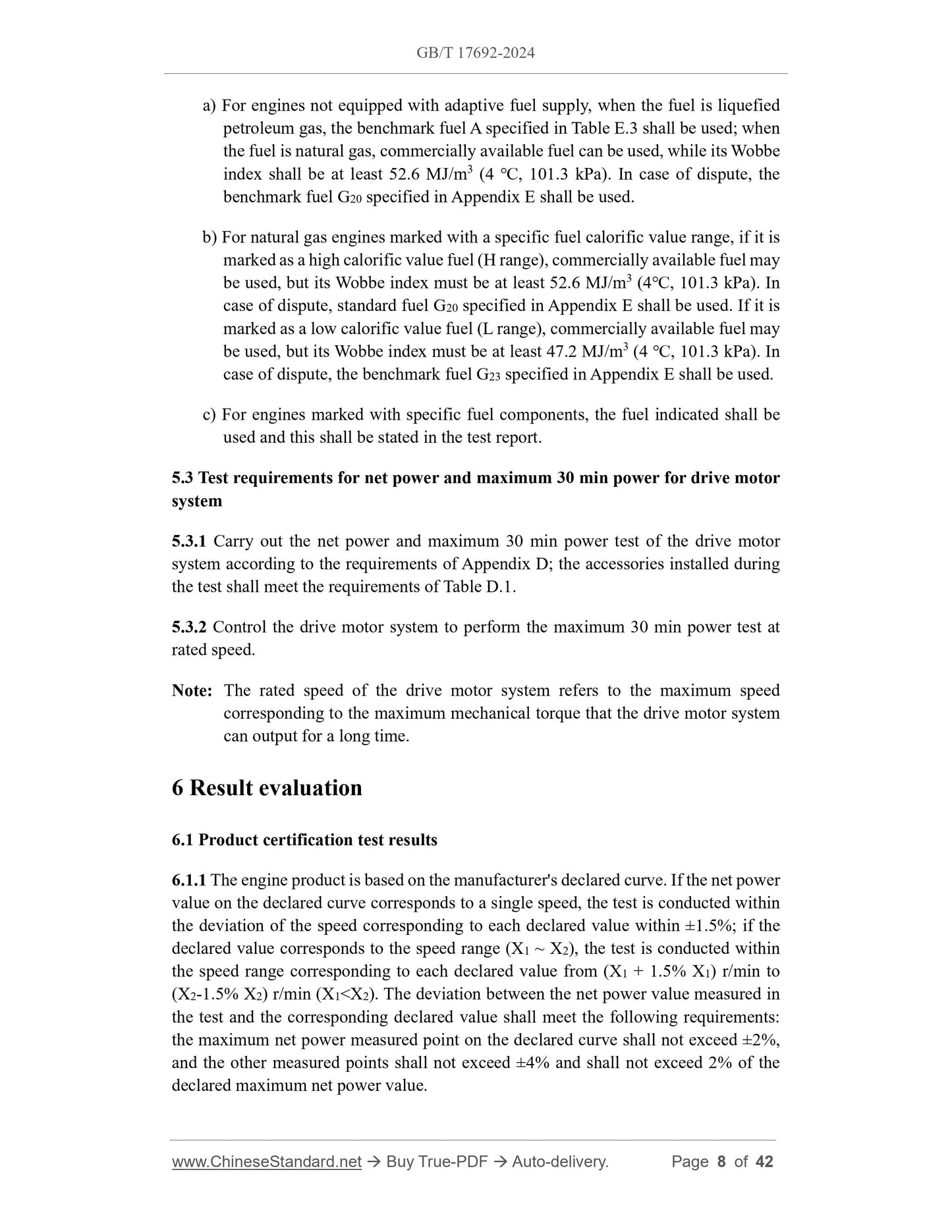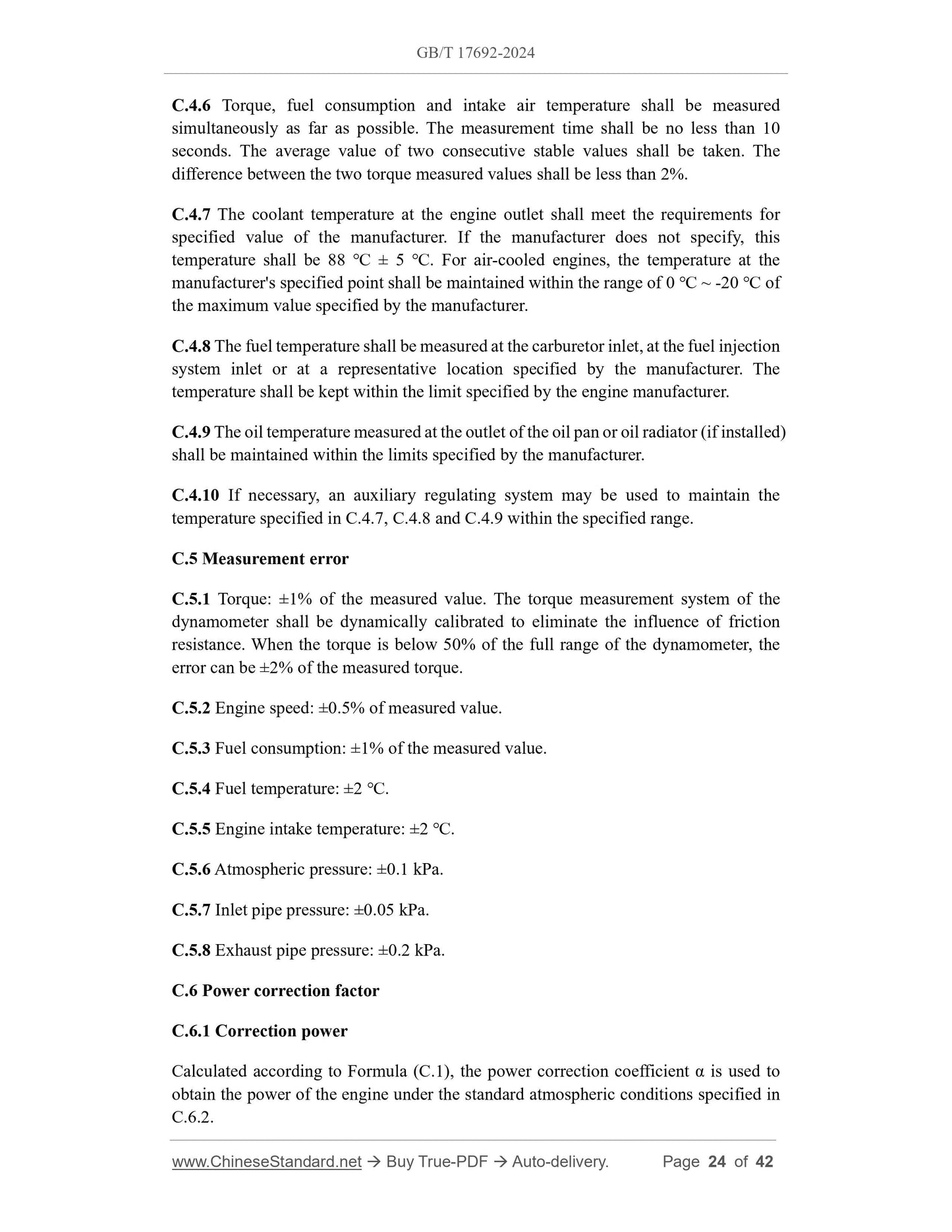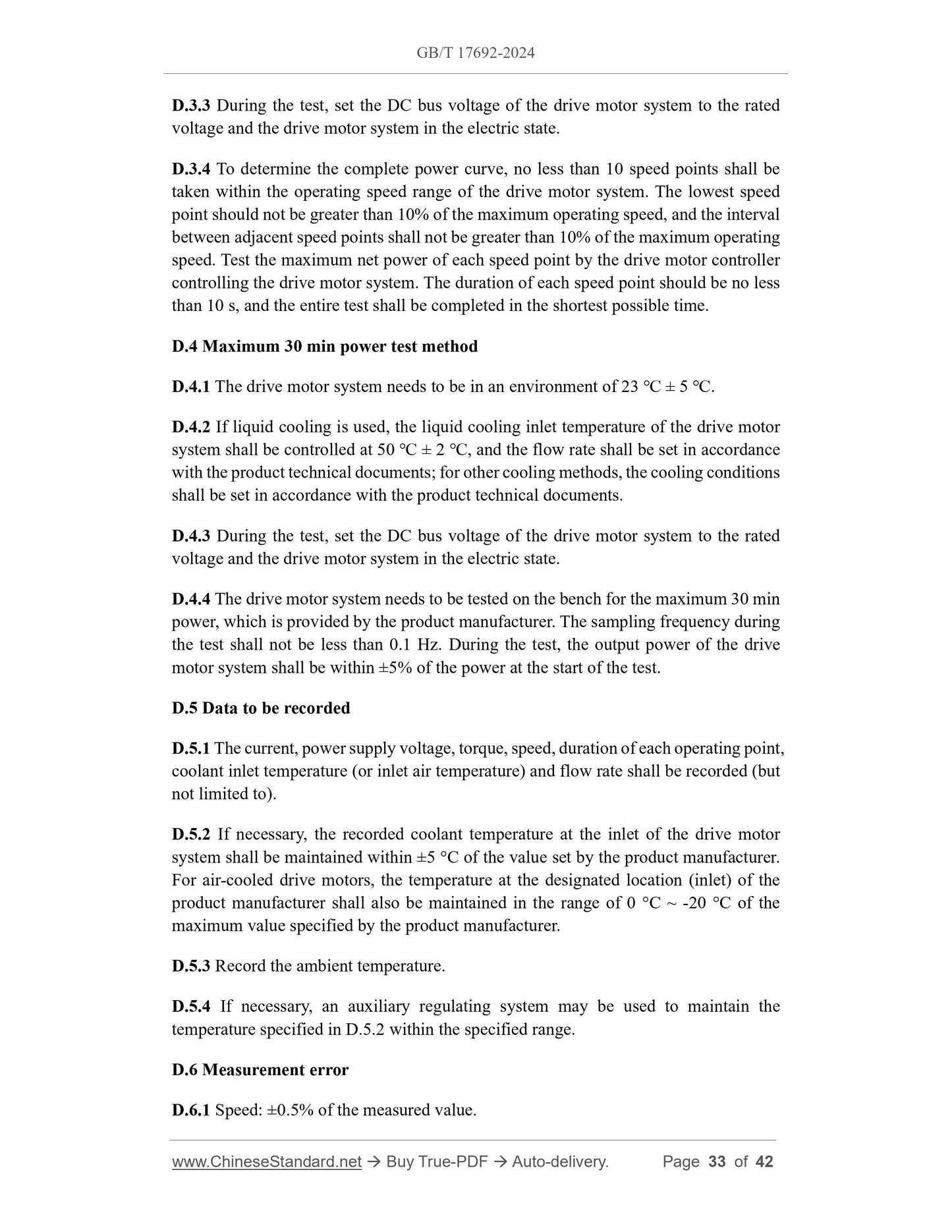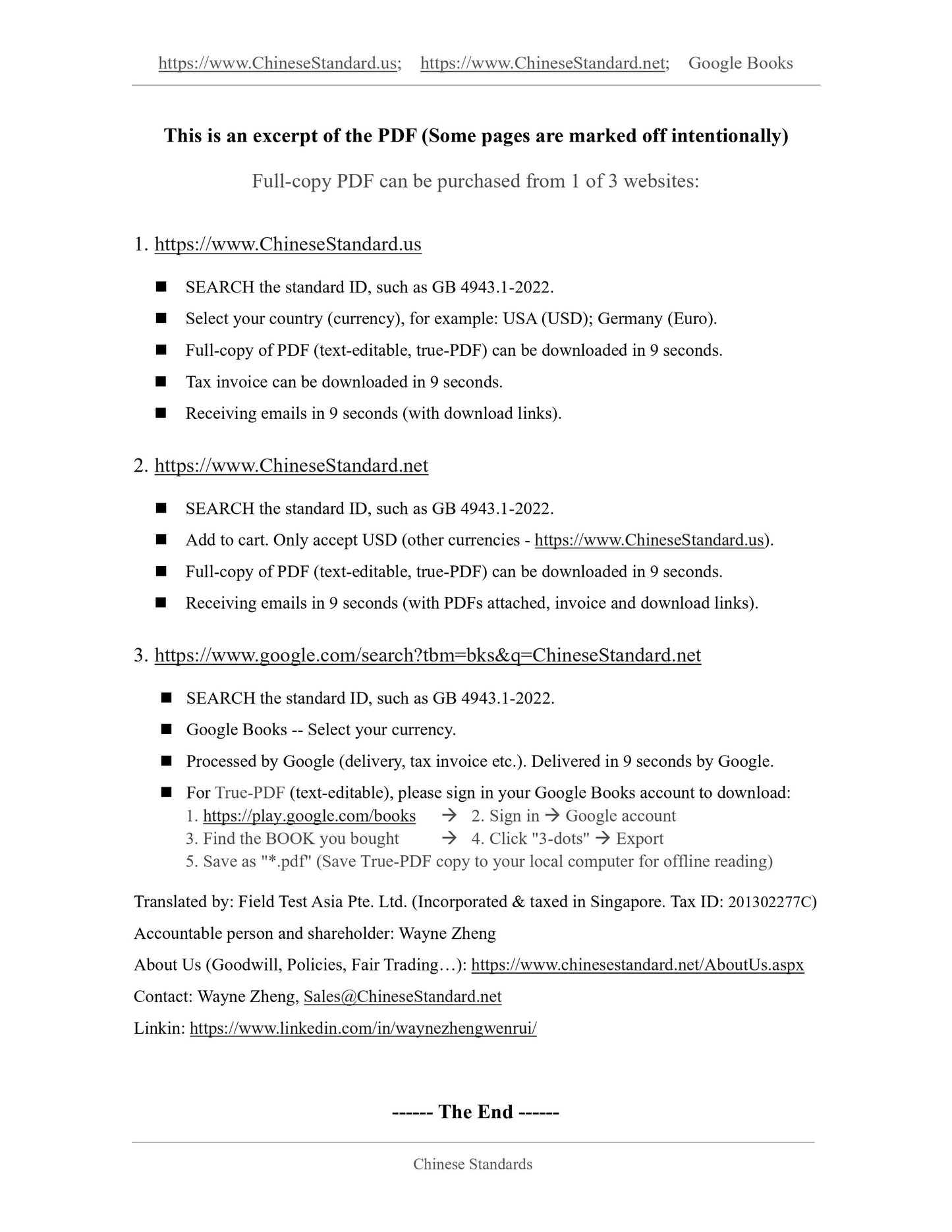1
/
of
8
www.ChineseStandard.us -- Field Test Asia Pte. Ltd.
GB/T 17692-2024 English PDF (GB/T17692-2024)
GB/T 17692-2024 English PDF (GB/T17692-2024)
Regular price
$560.00
Regular price
Sale price
$560.00
Unit price
/
per
Shipping calculated at checkout.
Couldn't load pickup availability
GB/T 17692-2024: Measurement methods of net power for automotive engines and drive motor
Delivery: 9 seconds. Download (and Email) true-PDF + Invoice.Get Quotation: Click GB/T 17692-2024 (Self-service in 1-minute)
Newer / historical versions: GB/T 17692-2024
Preview True-PDF
Scope
This document describes the method for conducting net power test and maximum 30min power test of drive motor systems for engines and drive motor systems for M and
N category vehicles, based on the net power versus speed curve proposed by the
manufacturer.
This document applies to reciprocating piston engines (spark ignition or compression
ignition) or rotary engines (spark ignition or compression ignition), but not to free
piston engines.
This document applies to drive motor systems.
Basic Data
| Standard ID | GB/T 17692-2024 (GB/T17692-2024) |
| Description (Translated English) | Measurement methods of net power for automotive engines and drive motor |
| Sector / Industry | National Standard (Recommended) |
| Classification of Chinese Standard | T11 |
| Classification of International Standard | 43.060.01 |
| Word Count Estimation | 34,324 |
| Date of Issue | 2024-06-29 |
| Date of Implementation | 2025-01-01 |
| Older Standard (superseded by this standard) | GB/T 17692-1999 |
| Issuing agency(ies) | State Administration for Market Regulation, China National Standardization Administration |
Share
